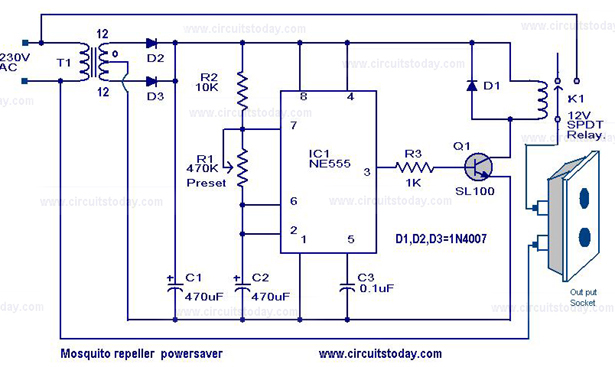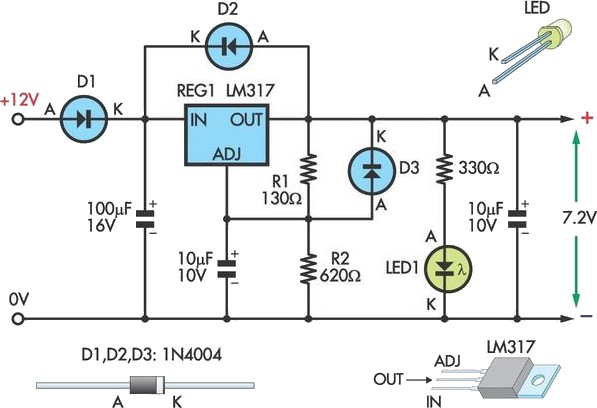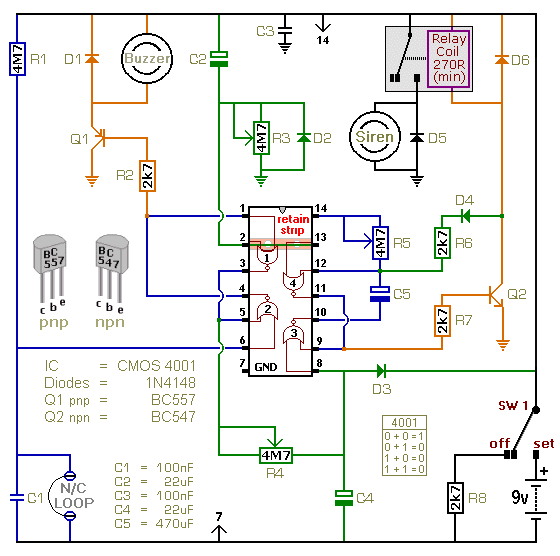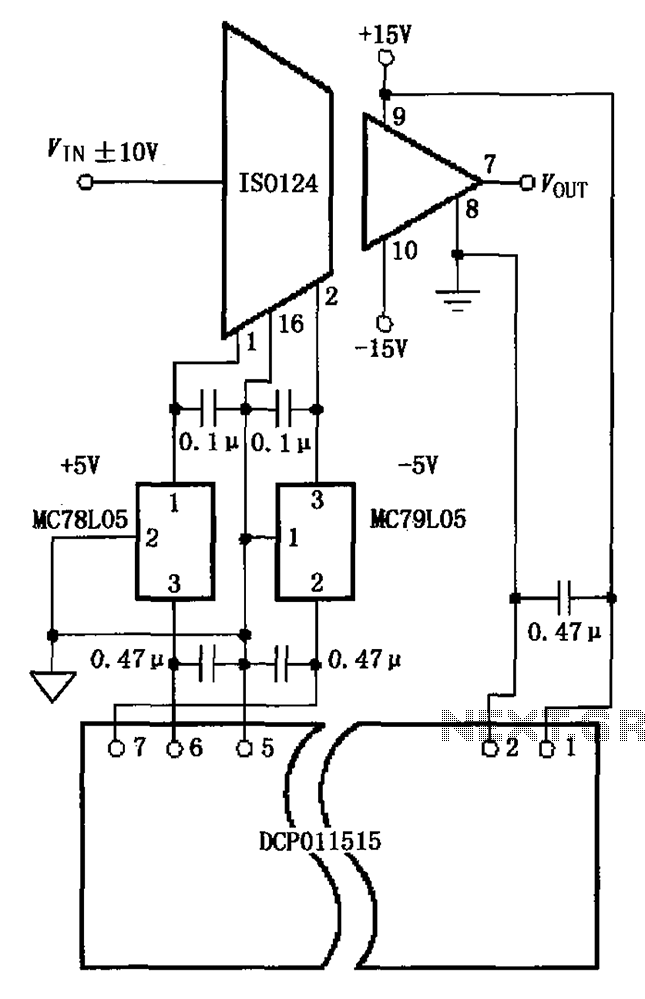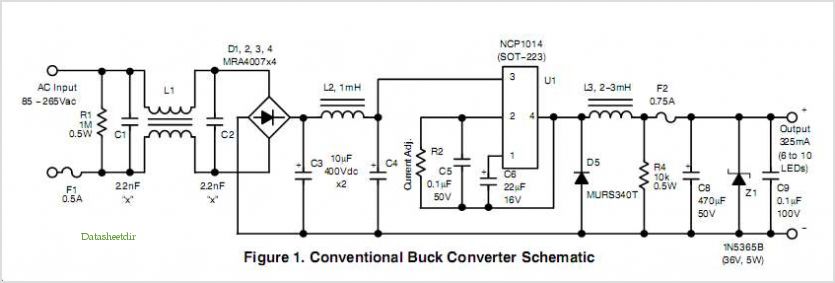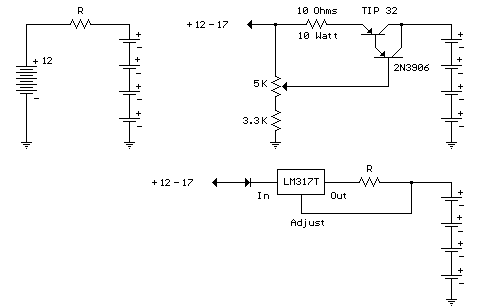
a current limiting bench power supply
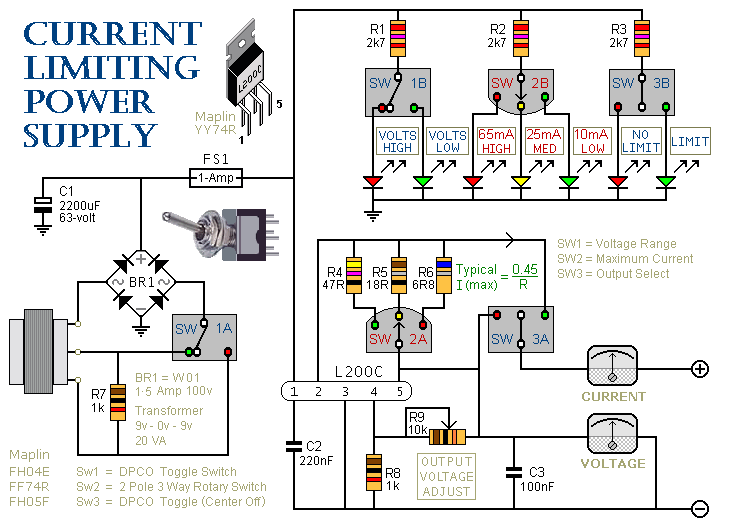
This is a 1-amp variable-voltage power supply unit (PSU) that can adjust the output voltage from approximately 3V to 24V. It includes a feature that allows for the limitation of the maximum output current, which is particularly useful when powering up a project for the first time or conducting a soak test on a piece of equipment.
The 1-amp variable-voltage power supply unit (PSU) is designed to provide a versatile and adjustable power source for various electronic applications. The output voltage range of 3V to 24V allows for compatibility with a wide range of devices and circuits, making it suitable for both low-voltage and higher-voltage projects.
The current limiting feature is a critical safety mechanism that helps prevent damage to sensitive components during initial power-up or testing phases. By setting a maximum output current, the user can ensure that the connected load does not draw excessive current, which could lead to overheating or failure of the components. This feature is particularly useful in experimental setups where the actual current draw may not be known beforehand.
The PSU typically includes a user-friendly interface, often comprising of a rotary knob or slider for voltage adjustment and a digital or analog display to show the current output voltage and current draw. Additional features may include over-voltage and over-current protection circuits, which further enhance the reliability and safety of the power supply.
In terms of construction, the PSU may utilize a linear or switching regulator design, depending on the desired efficiency and thermal management characteristics. Linear regulators are known for their simplicity and low noise output, while switching regulators offer higher efficiency and can handle larger voltage drops with less heat generation.
Overall, this 1-amp variable-voltage power supply unit is an essential tool for electronics engineers and hobbyists, providing a reliable and adjustable power source for a variety of applications, from prototyping to testing.This is a 1-amp variable-voltage PSU. It adjusts from about 3v to 24v: and has the added feature that you can limit the maximum output current. This is invaluable when (for example) you power-up a project for the first time or soak-test a piece of equipment..
🔗 External reference
The 1-amp variable-voltage power supply unit (PSU) is designed to provide a versatile and adjustable power source for various electronic applications. The output voltage range of 3V to 24V allows for compatibility with a wide range of devices and circuits, making it suitable for both low-voltage and higher-voltage projects.
The current limiting feature is a critical safety mechanism that helps prevent damage to sensitive components during initial power-up or testing phases. By setting a maximum output current, the user can ensure that the connected load does not draw excessive current, which could lead to overheating or failure of the components. This feature is particularly useful in experimental setups where the actual current draw may not be known beforehand.
The PSU typically includes a user-friendly interface, often comprising of a rotary knob or slider for voltage adjustment and a digital or analog display to show the current output voltage and current draw. Additional features may include over-voltage and over-current protection circuits, which further enhance the reliability and safety of the power supply.
In terms of construction, the PSU may utilize a linear or switching regulator design, depending on the desired efficiency and thermal management characteristics. Linear regulators are known for their simplicity and low noise output, while switching regulators offer higher efficiency and can handle larger voltage drops with less heat generation.
Overall, this 1-amp variable-voltage power supply unit is an essential tool for electronics engineers and hobbyists, providing a reliable and adjustable power source for a variety of applications, from prototyping to testing.This is a 1-amp variable-voltage PSU. It adjusts from about 3v to 24v: and has the added feature that you can limit the maximum output current. This is invaluable when (for example) you power-up a project for the first time or soak-test a piece of equipment..
🔗 External reference
